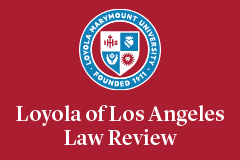Abstract
Currently, over 1 million properties in the United States are in some stage of foreclosure. Although foreclosure rates have decreased in recent years, they remain significantly higher than pre-lending-crisis rates, revealing that foreclosure is relatively commonplace in the current housing market. As such, consumers increasingly rely on consumer protection laws to provide security against the threat of foreclosure and unfair credit practices. The Federal Truth in Lending Act (TILA) was enacted to assure meaningful disclosure of credit and finance terms in consumer credit transactions. Among the various remedies available under TILA, consumers have the right to rescind the entire credit transaction if the lender fails to make certain disclosures. Section 1635(f) provides that a consumer must exercise his or her right to rescind within three years of the loan’s consummation, or the right expires. Thus, the question becomes: how does a consumer exercise his or her right to rescind under TILA? According to the Ninth and Tenth Circuit Courts of Appeal, a consumer must file an action for rescission to exercise his or her right to rescind under Section 1635(f). On the other hand, the Fourth Circuit, relying largely on the Federal Reserve Board’s regulations to TILA, held that a consumer exercises his or her right to rescind merely by sending notice to the lender within the statutory three-year period. This Note explores the split of authority on consumers’ right to rescind under TILA and ultimately proposes that the Fourth Circuit’s holding be reversed by the Supreme Court of the United States.
Recommended Citation
Alan Ritchie,
The (Un)informed Use of Credit: The Need To Clarify Consumers' Right Of Rescission Under The Truth In Lending Act,
47 Loy. L.A. L. Rev. 831
(2014).
Available at: https://digitalcommons.lmu.edu/llr/vol47/iss3/6


